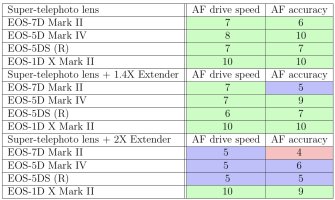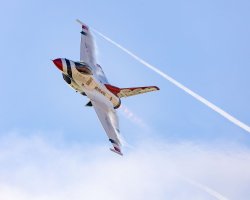No mention of me? I practically live to come to these forums and point out that more pixels = more noise is a myth.

Regarding this topic:
* If you pixel peep high MP vs low MP at high ISO, the noise
is worse because you are magnifying the high MP image more. If you survey the 5Ds/sr reviews from 2015 it's surprising how many reviewers didn't seem to understand this. The ones who did and judged at the same view size (i.e. Tool; Imaging Resource) did not say the 5Ds/sr were worse. They were, in fact, quite pleased with the high ISO performance.
* If you view at the same size the noise level is roughly the same, as it should be because it's dominated by photon statistics (as Michael and Alan have pointed out). But the characteristic of the noise is admittedly different. 5Ds/sr high ISO files are sharper and more detailed, but the noise itself is "sharper" if you will because the interaction is occurring over smaller pixels. This can stand out in areas of solid color (i.e. blue sky). The noise feels more obtrusive even if you can perform a lab test and prove it's comparable when measured.
I basically use ACR and PS and haven't investigated DxO or recent versions of Noise Ninja. They may indeed be better at high ISO. Having said that...
* Color noise cleans up nicely if you bump the color NR slider in ACR at high ISOs. You don't lose detail by bumping the CNR slider. If pushed too hard you lose color fidelity, but that occurs near maximum CNR. Adjust that for the ISO you're shooting at and most of the obtrusive noise in areas of solid color should be gone.
* Luminance NR does cost detail, but
you have more detail to begin with with these cameras. I would much rather be in that position. I can choose the balance between noise, sharpness, and fine detail as I move the sliders in ACR. There's nothing you can do to get the detail in a lower MP camera, and if you try to match the sharpness the luminance noise will explode. Conversely, you can push LNR fairly hard with a 5Ds/sr file and still have a sharp, detailed file.
* If you're shooting RAW and playing with your NR sliders you should not end up with a worse print at high ISO from a high MP camera. Your print should be just as clean or even cleaner, yet sharper with more detail as well. If you're going straight to print with no processing you might prefer a lower MP camera because the noise is 'softer' in large areas of color like blue sky.
Having shot a 5Ds for a year I trust it at all ISO settings. Naturally I cannot print as large from 12,800 as I can from 100. And I will use the lowest ISO I can to maximize IQ. But I do not hesitate to use the highest ISOs if I need to. I'm particularly shocked when I hear someone say they don't like it at 1600 or higher because I would not hesitate to make 36" prints from ISO 3200. And I've got a heavily cropped ISO 1600 wedding photo I'm rather proud of which shows zero noise and astonishing fine detail at 17x22.



